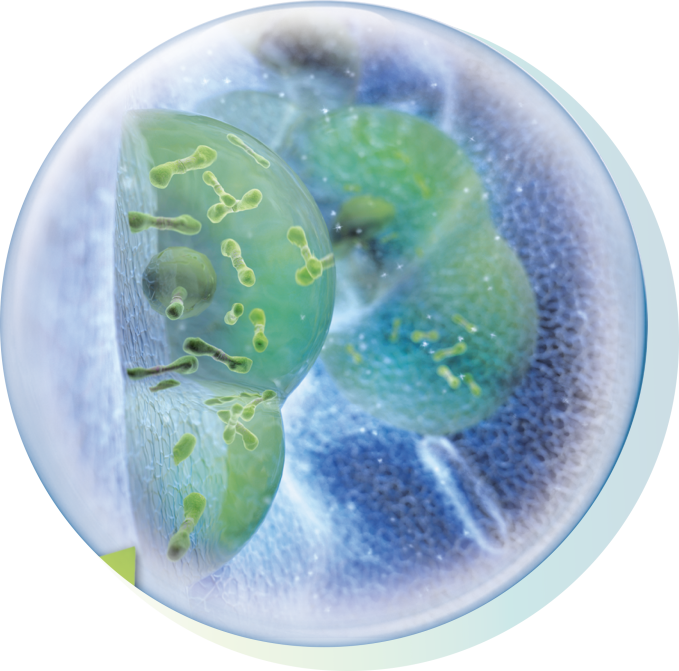-
Your concerns
Our articles to help you gain a better understanding
-
Our solutions
-
Ducray Dermatological laboratories
Our articles to help you gain a better understanding

The skin microbiome is the set of microorganisms living on the surface of the skin and participating in its proper functioning. In the event of acne, we refer to dysbiosis or a microbiome imbalance. Dysbiosis leads to inflammatory acne and is responsible for its chronic nature.

Summary
Formerly known as Propionibacterium acnes, Cutibacterium acnes is the main bacteria involved in acne. It is a bacteria present in the sebaceous glands of all individuals and exists in different types. Cutibacterium acnes plays an important role in the skin microbiome, contributing to its balance. It is a saprophytic bacteria, i.e. it feeds on decomposing organic matter such as sebum.
In the case of acne, some types of Cutibacterium acnes disappear while others become predominant. This loss of diversity is an initial driver of dysbiosis. At the same time, other bacteria of the staphylococcus family (mainly S.epidermidis and also S.aureus) flare up and increase microbiome imbalances.
Cutibacterium acnes impacts the sebum-producing cells, as well as impacting retentional acne. The skin microbiome affects two main forms of acne: inflammatory acne and retentional acne.
Skin microbiome imbalance is accompanied by the formation of biofilm: these are thin layers that isolate the bacteria from the outside, allowing them to continue to grow and make them more resistant to antibacterial treatments. It has also been shown that certain strains of C.acnes can impact the severity of juvenile acne.
We must respect the various forms of the skin microbiome, in order to maintain it, and acne patients should use suitable products in order to RESTORE it.
Whatever the treatment, cleansing must remain gentle, soap-free and at a physiological pH, to avoid the risk of unbalancing the microbiome.
Some prescribed acne treatments use antibiotics to fight Cutibacterium acnes, but this may further disrupt the skin microbiome. In general, these treatments should not be used on their own so as to avoid the development of resistance and treatment failures.
The preferred approach is to use certain active ingredients present in anti-acne creams that limit the formation of biofilm and/or help rebalance the skin microbiome and therefore regulate the appearance of acne.
Oily or acne-prone skin

Oily or acne-prone skin
NEWSLETTER
Dermatological expertise
To better understand your skin and hair, discover our exclusive content and innovative care products designed to improve your quality of life..